
The War Manpower Commission was a World War II agency of the United States Government charged with planning to balance the labor needs of agriculture, industry and the armed forces.[ citation needed ]

The War Manpower Commission was a World War II agency of the United States Government charged with planning to balance the labor needs of agriculture, industry and the armed forces.[ citation needed ]
The Commission was created by President Franklin D. Roosevelt in Executive Order 9139 of April 18, 1942. Its chairman was Paul V. McNutt, head of the Federal Security Agency. In this Executive Order, the War Manpower Commission was headed by the Federal Security Administrator as Chairman, and consisted of representatives from the Department of War, the Department of the Navy, the Department of Agriculture, the Department of Labor, the War Production Board, the Labor Production Division of the War Production Board, the Selective Service System, and the United States Civil Service Commission to ensure effective mobilization of manpower in the post-war era. [1]
Executive Order 9279, dated December 5, 1942, transferred the Selective Service System to the War Manpower Commission. However, a year later it was made a separate agency directly responsible to the President.
McNutt appointed all men to his labor advisory committee, despite the pleas of Women's Bureau director, Mary Anderson, to have women represented. Instead, he created a Women's Advisory Committee appointing thirteen prominent women professionals, business executives, journalists, educators and organizational presidents. However, he did not provide a budget and its members were not paid. [2]
This section of the Timeline of United States history concerns events from 1930 to 1949.
The United States federal executive departments are the principal units of the executive branch of the federal government of the United States. They are analogous to ministries common in parliamentary or semi-presidential systems but they are led by a head of government who is also the head of state. The executive departments are the administrative arms of the president of the United States. There are currently 15 executive departments.
The United States maintained its Constitutional Republic government structure throughout World War II. Certain expediencies were taken within the existing structure of the Federal government, such as conscription and other violations of civil liberties, and the internment and later dispersal of Japanese-Americans. Still, elections were held as scheduled in 1944.

The Black Cabinet, or Federal Council of Negro Affairs or Black Brain Trust, was the informal term for a group of African Americans who served as public policy advisors to President Franklin D. Roosevelt and First Lady Eleanor Roosevelt in his terms in office from 1933 to 1945. Despite its name, it was not an official organization. The term was coined in 1936 by Mary McLeod Bethune and was occasionally used in the press. By mid-1935, there were 45 African Americans working in federal executive departments and New Deal agencies.

The War Shipping Administration (WSA) was a World War II emergency war agency of the US government, tasked to purchase and operate the civilian shipping tonnage the United States needed for fighting the war. Both shipbuilding under the Maritime Commission and ship allocation under the WSA to Army, Navy or civilian needs were closely coordinated though Vice Admiral Emory S. Land who continued as head of the Maritime Commission while also heading the WSA.

The War Production Board (WPB) was an agency of the United States government that supervised war production during World War II. President Franklin D. Roosevelt established it in January 1942, with Executive Order 9024. The WPB replaced the Supply Priorities and Allocations Board and the Office of Production Management.
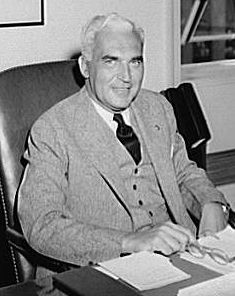
Paul Vories McNutt was an American diplomat and politician who served as the 34th governor of Indiana, high commissioner to the Philippines, administrator of the Federal Security Agency, chairman of the War Manpower Commission and ambassador to the Philippines.

The United States Women's Bureau (WB) is an agency of the United States government within the United States Department of Labor. The Women's Bureau works to create parity for women in the labor force by conducting research and policy analysis, to inform and promote policy change, and to increase public awareness and education.
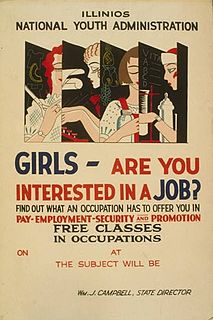
The National Youth Administration (NYA) was a New Deal agency sponsored by Franklin D. Roosevelt during his presidency. It focused on providing work and education for Americans between the ages of 16 and 25. It operated from June 26, 1935 to 1939 as part of the Works Progress Administration (WPA) and included a Division of Negro Affairs headed by Mary McLeod Bethune who worked at the agency from 1936 to 1943. Following the passage of the Reorganization Act of 1939, the NYA was transferred from the WPA to the Federal Security Agency. In 1942, the NYA was transferred to the War Manpower Commission (WMC). The NYA was discontinued in 1943.
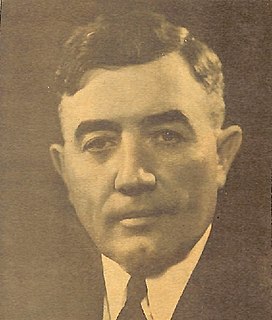
Maurice Clifford Townsend was an American politician and the 35th governor of the U.S. state of Indiana from 1937 to 1941. During his term, he led relief efforts during and after the Great Flood of 1937.

The United States home front during World War II supported the war effort in many ways, including a wide range of volunteer efforts and submitting to government-managed rationing and price controls. There was a general feeling of agreement that the sacrifices were for the national good during the war.
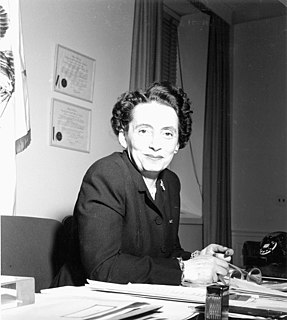
Anna Marie Rosenberg, later Anna Rosenberg Hoffman, was an American public official, advisor to presidents, and businesswoman.
The Federal Security Agency (FSA) was an independent agency of the United States government established in 1939 pursuant to the Reorganization Act of 1939. For a time, the agency oversaw food and drug safety, education funding, administration of public health programs, and the Social Security old-age pension plan.
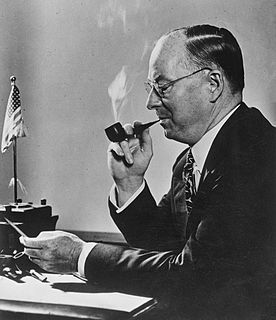
Donald Marr Nelson (1888–1959) was an American business executive and public servant, serving as the executive vice president of Sears Roebuck before accepting the position of director of priorities of the United States Office of Production Management (1941–1942). In 1942 Nelson became chairman of the War Production Board (1942–1944) when it replaced the OPM. He later served for two years (1945–1947) as president of the Society of Independent Motion Picture Producers.
The Fair Employment Practice Committee (FEPC) was created in 1941 in the United States to implement Executive Order 8802 by President Franklin D. Roosevelt "banning discriminatory employment practices by Federal agencies and all unions and companies engaged in war-related work." That was shortly before the United States entered World War II. The executive order also required federal vocational and training programs to be administered without discrimination. Established in the Office of Production Management, the FEPC was intended to help African Americans and other minorities obtain jobs in home front industries during World War II. In practice, especially in its later years, the committee also tried to open up more skilled jobs in industry to minorities, who had often been restricted to lowest-level work. The FEPC appeared to have contributed to substantial economic improvements among black men during the 1940s by helping them gain entry to more skilled and higher-paying positions in defense-related industries.
The National Defense Mediation Board (NDMB) was a United States federal agency established by Executive Order 8716 on March 19, 1941, that settled disputes between labor and management during the prewar defense period. The executive order established the NDMB as a tripartite agency of eleven representatives, four each from labor and industry and three from the public. The order vested in the agency the power to “exert every possible effort to assure that all work necessary for national defense shall proceed without interruption and with all possible speed.” The Board could use either mediation or voluntary arbitration to resolve disputes between management and labor in defense industries. If these methods failed, the Board was empowered to investigate controversies, conduct fact-finding, and formulate recommendations. During the ten months of its existence, the Board received a total of 118 cases of labor disputes. Since strikes were usually in progress when the Board received its cases, the NDMB's basic policy was to persuade unions to call off strikes in return for wage retroactivity and a promise of a hearing. This was successful in most cases, but, in the rare instances when parties did not heed Board recommendations, the Board forwarded matters to the White House. The NDMB ultimately collapsed because of a dispute involving the “captive mines,” during which the Board refused to grant union shop to the United Mine Workers (UMW). On January 12, 1942, the National Defense Mediation Board was superseded by the National War Labor Board.

The War Food Administration was a United States government agency that existed from 1943 to 1945. The War Food Administration was responsible for the production and distribution of food to meet war and essential civilian needs during World War II. It was a predecessor of the Farm Service Agency.
The National War Labor Board, commonly the War Labor Board was an agency of the United States government established January 12, 1942 by executive order to mediate labor disputes during World War II.
The presidency of Franklin D. Roosevelt began on March 4, 1933.